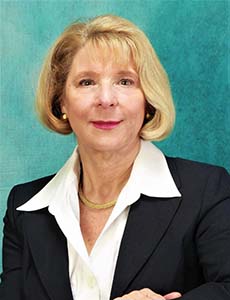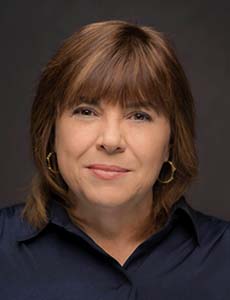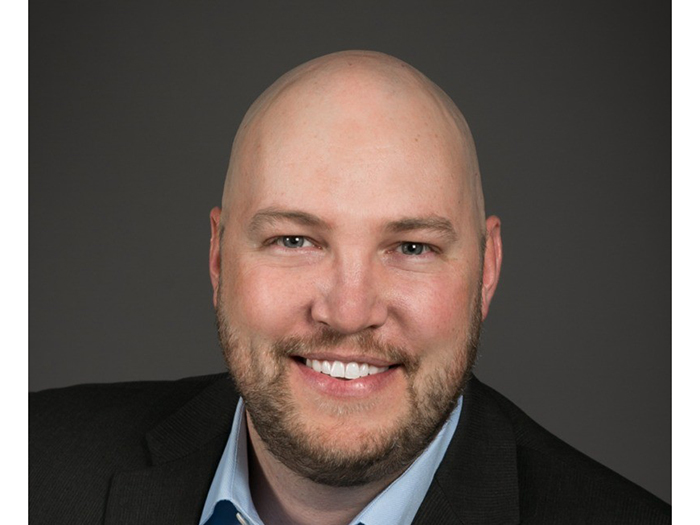At RISKWORLD 2023: How Solid ERM Practices Can Help Recognize and Mitigate ESG Risks

Any organization can say it’s operating in a way that’s mindful of the environment and society, and that it practices good governance. But can they prove it? Regardless of sector, nearly every organization today has been called to publicly disclose its ESG position and report on how it’s progressing on all three fronts.
But taking a firm public stance on ESG can lead to companies paying a high price with shareholders, as BlackRock recently experienced during the five-year aftermath of its CEO’s 2018 annual letter urging stronger corporate considerations for the environment and society.
And given that the 10 largest ESG funds reported double-digit losses at the end of 2022 — eight of them falling well below the S&P 500’s 14.8% decline — “risk managers have to help their companies understand the risks and mitigate the risks,” said Donna Galer, ESG consultant at RE-Risk Advisors and author of several books on ERM and ESG, during the session “How ERM Can Recognize and Mitigate ESG Risks” at this year’s RISKWORLD in Atlanta.
Galer — along with Theresa Severson, VP of insurance and risk at Kite Realty Group (KRG) and RIMS 2023 Risk Manager of the Year — provided attendees with an overview of how organizations can build risk taxonomies, a core ERM practice, to recognize ESG risks and mitigate them in ways that go beyond purchasing insurance.
Common ESG Pitfalls
No matter how many stakeholder benefits there are to pursuing ESG initiatives, they also come with risks, Galer explained.
Although every industry has a unique set of ESG priorities complete with a corresponding set of risks, Galer outlined four common ESG pitfalls to which all sectors are vulnerable — starting with not fulfilling their promises.
“Companies have to be concerned about setting [ESG] goals and not meeting them,” she said.
“But if goals are set with the idea of having SMART goals — that they’re specific, measurable, achievable, relevant and time-bound — then there’s a good chance they will be achievable. So that’s really the mitigation.
“As long as there is good monitoring about how well you are doing, you can always raise those goals,” she added. “That really is a risk that’s controllable.”
“Normally, doing ERM, it’s helpful to start with a risk taxonomy.” — Donna Galer, ESG consultant at RE-Risk Advisors and author of several books on ERM and ESG
Secondly, reporting errors, exaggerations and lack of due diligence (collectively known as “greenwashing”) have become a problem as some organizations purport their commitment to environmental stewardship and corporate social responsibility without much depth to the claims.
“Greenwashing can create the risk of fines and penalties as well as reputational damage,” Galer said, citing examples such as the raiding of Deutsche Bank’s investment arm and Goldman Sachs being fined for improperly vetting its ESG funds.
And then there are the unintended consequences of some strategies companies employ to achieve their ESG goals, especially those associated with diversity, equity and inclusion (DEI). Organizations frequently tout how many employee resource and affinity groups they have, but endorsements of those groups can run afoul of the National Labor Relations Act, Galer said.
“[ERGs] could be considered collective bargaining units if they engage in negotiating (which is open to interpretation) their working conditions with management … if that company is already unionized,” she said. “You can’t have two competing unions in the same organization.
“There may be other ways to foster DEI,” she said, suggesting companies consider other priorities within the space, such as making sure to pay their employees equitably.
They can also ensure that inclusion is real, she added, “such as [by] making sure high-profile special teams are made up of a diverse group of employees and making sure that those chosen for educational opportunities come from diverse backgrounds, etc.”
Because ESG is such a hot-button issue, Galer said, leaders may also overinvest resources and attention on meeting ESG goals and lose sight of some basics of the business.
“Even though many ESG goals are going to be cost-saving, eventually, in the short term, they can cost a lot of money,” Galer noted.
The up-front expenses of changing a manufacturer’s entire energy package from coal to a more renewable kind of energy, for example, could be quite high, she said: “So, these extra costs, if they’re not expected, can be a big shock to the organization.”
What’s the mitigation, then? “Better planning,” she said. “Focus on the long-term ROI and not the short-term.”
And even from a basic level, Severson said, risk professionals must consider other factors that can come into play after making ESG-related investments. When her team at KRG, a Class A real estate company, decided to install electric vehicle charging stations at its properties, Severson said, it had to simultaneously consider its fire exposures.
It’s vital that management teams avoid having their focus be diverted in pursuit of ESG goals, Galer said. “Companies have to make sure they don’t incur [those risks] by taking a balanced approach … You have to focus on more than one thing: profit, people, knowledge and process. Everything that we do has to be balanced.”
That balance can come from establishing reasonable goals, Severson said. When KRG grew by 60% as a result of its October 2021 merger with Retail Properties of America Inc., Severson’s team was cautious about how that expansion would affect its ESG initiatives.
“We had to be realistic about how much we were going to take on,” she said.
Getting ESG Risks Down to a Science
When it comes to mitigating the top ESG risk of not making good on promises, creating a balanced scorecard with which to measure performance is vital.
But Severson acknowledged that “measuring is tricky because there is no standardization” of ESG benchmarks and standards — though Galer noted that there are many competing places risk professionals can go to seek reasonable indicators to measure their ESG performance (i.e. S&P, Morningstar).
“There is talk of concerted effort to standardize,” Galer added.
But as a general practice, coming up with the ESG components to include on a corporate risk scorecard begins with creating a risk register, or what Galer referred to as a “risk taxonomy.”
“Normally, doing ERM, it’s helpful to start with a risk taxonomy,” Galer said.
By looking at the universe of risks that an organization will be facing in the realm of environmental, social and governance matters, a chief risk officer can then translate these risks into questionnaires and request the feedback of key players within the organization.
This is precisely what Severson did.
“If your underwriters for D&O liability ask what your company is doing on ESG … there’s a cost if you’re not doing anything on ESG [and] other companies in the underwriting book of business are doing something.” — Ted Dann, real estate practice leader at RE-Risk Advisors
In 2014, KRG’s team initiated its process of quantifying how it would report on ESG priorities. She also shared the steps they took to arrive at solid metrics that could be measured, which were ultimately reported publicly in the company’s first corporate responsibility report, released in 2022.
Although the company has had community initiatives in place and has aimed to exercise environmental stewardship across its portfolio of properties for quite some time, Severson said, going through the risk taxonomy exercise with an outside consultant helped the company determine how it would measure its ESG performance.
“The different aspects that encompass ESG have always been something that’s been integrated in the organization,” she said. “It’s just something now that we are measuring and reporting for and putting together [in] a corporate responsibility report.”
With risk taxonomies in place, the outside consultant was able to survey and interview KRG’s stakeholders and identify the ESG topics that were most important to them. Key stakeholders included employees, shareholders and tenants, as well as members of the communities where KRG’s properties are located.
“And then they came back with their concerns — 22 key points — and from there, we could take each of our different [ESG] risks and put in how we were going to address them,” Severson said.
“The important part of that is that it came right directly from our stakeholders and not just our internal ESG committee,” Severson emphasized.
Tools to Engage Stakeholders
There are different ways to build risk taxonomies; in Severson’s case at KRG, surveys were the primary tool used. “But they all come down to the basics of seeing what’s impactful for your organization and identifying those for your stakeholders,” Severson said.
And the more effectively a questionnaire is designed, the better, Galer said, because “it’s used to as a tool to prompt people.”
Galer walked session attendees through a brief exercise on how to translate elements of a risk taxonomy into a questionnaire for staff to complete. As an example of how to take an ESG risk that might be in a taxonomy and pose it as a question, she shared a slide with a potential statement on governance: “There is a risk that compensation plans are inducing unethical or illegal conduct.”
“Do they think that risk exists in the organization, and to what extent?” she asked.
Staff respondents could then choose if they felt this was a high, medium or low risk at their employer, or if this was not an issue at all.
“Give them space to elaborate,” she added, pointing to a section below the ratings for open-ended responses. “High, medium or low isn’t going to be enough without additional explanation.”
Some organizations will choose to follow up a stakeholder questionnaire with person-to-person interviews “so they can get behind what’s been picked up,” Galer said. Others have workshops to gather risk input rather than use questionnaires.
What About Shareholders’ Concerns?
While stakeholder feedback is essential in developing ESG goals, organizations must still consider how their shareholders will react to any investment made in those areas at the end of the day, as a member of the audience pointed out during a dynamic question-and-answer moment of the session.
“Shareholder value is paramount,” said session moderator Ted Dann, real estate practice leader at RE-Risk Advisors. And spending money on ESG is where the two can become conflicting goals, he acknowledged.
“Do we want to be responsible to our employees, communities, tenants?” Dann said. “There is a cost that comes with that.”
But assuming you believe in climate change and the impact that we are experiencing, Dann said, the question many executives have to also consider is “Do we have to sacrifice a little?”
Acknowledging the ongoing debates over shareholder capitalism versus stakeholder capitalism, Dann said the counterargument is that companies that place their stakeholders’ interests too highly could be putting themselves at a disadvantage if their competitors — say, in other countries — do not subscribe to the same ESG goals.
“Ultimately, a company has to decide if maximizing profits is paramount to all other considerations or if a company recognizes, in its broader mission, a responsibility to … minimize the impact of [its] operation on the environment and other worthy goals.
“The two cannot be easily reconciled,” he said.
Determinants of ESG Success
While Severson’s experience that led to the production of KRG’s first corporate responsibility report helped illustrate the value of weighing stakeholder input to create meaningful ESG metrics, she emphasized how ERM, especially when applied to ESG, is ultimately about exercising sound business practices.
“It’s doing the analysis to make sure if there’s any way that we can strengthen [these practices], and then being able to report it up to the audit committee,” she said, “so that we can make sure … we have a full picture.”
This means that as companies go through their risk taxonomy processes and determine which metrics to include on their ESG scorecard, they must simultaneously think about how ESG is going to affect its expenses and overall business performance, Galer reiterated.
But none of the potential pitfalls of making ESG a priority should stop a company from aiming to implement ESG, Galer said — “They just need to be aware of the risks.”
Doing very little on the ESG front could also be costly for some companies at insurance renewal time, Dann said. “If your underwriters for D&O liability ask what your company is doing on ESG … there’s a cost if you’re not doing anything on ESG [and] other companies in the underwriting book of business are doing something.”
Galer left session attendees with a few thoughts on factors that may help their organizations successfully pursue their ESG priorities.
Support from the top is key. It’s not just about verbal support from top leadership but how management models the goals and philosophy behind the ESG efforts. This will be a determinant of success, Galer said.
ESG has to be embraced by the entire organization, not just the ESG committee — if an organization has one to begin with, she said.
How a company will deliver on its ESG goals should be a matter of compliance and performance management, Galer said. Some companies claim that their executives will be evaluated by ESG performance, however, she noted that only 6% of CFOs said their compensation would be impacted by their company’s ESG results, according to a recent Deloitte report.
Make sure ESG goals are realistic, she said. “If they’re not realistic or [they are] confusing, they’re not going to be achieved.”
Avoid pursuing ESG to the detriment of the business. “If it becomes too much — an end in itself — this is where unintended consequences come in,” Galer said. &













